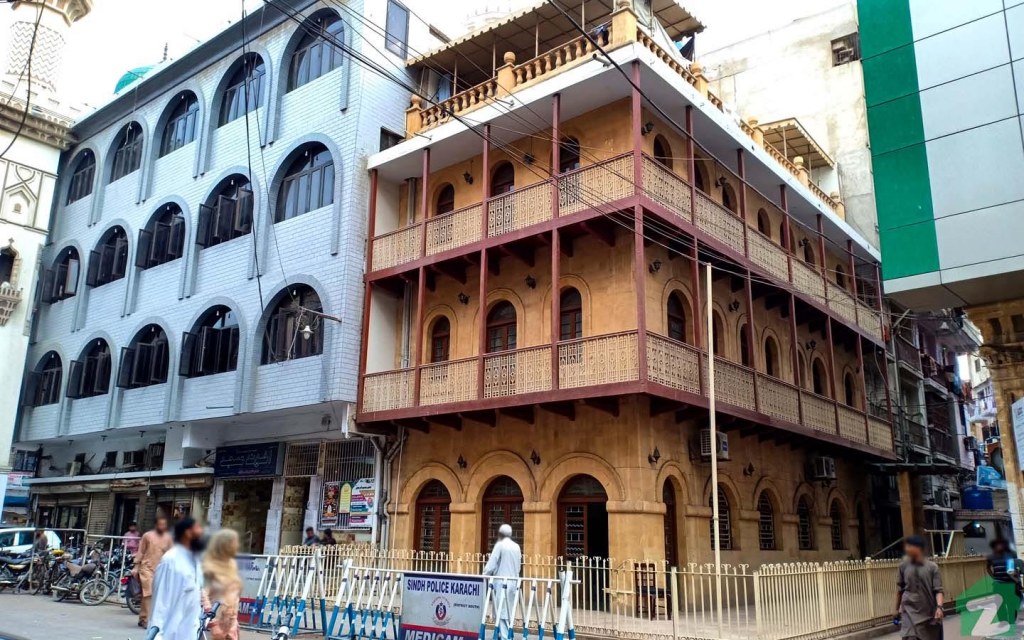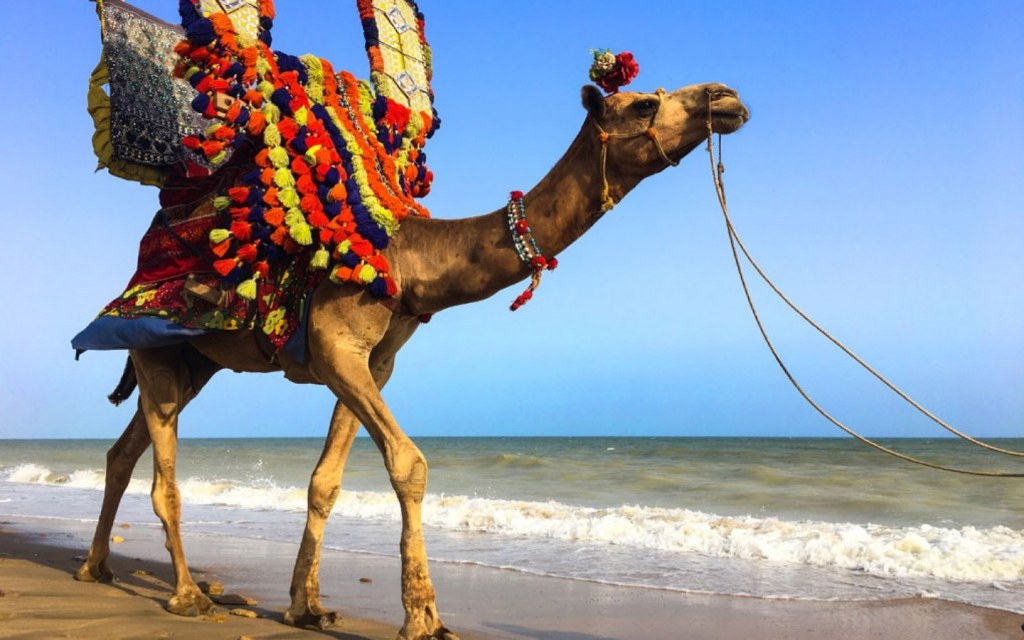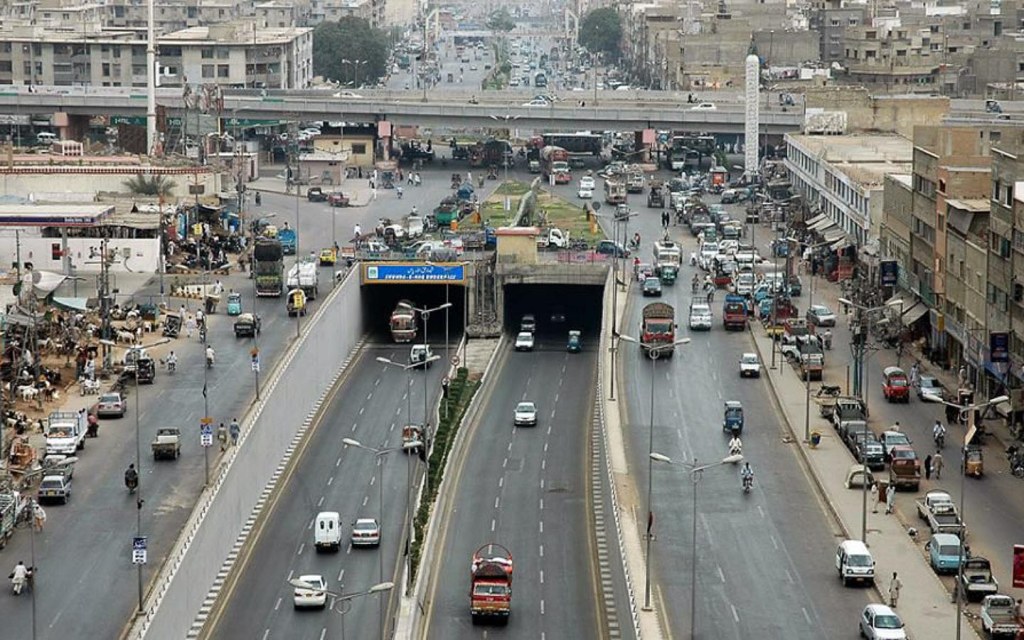Karachi is a buzzing port city, but this wasn’t always the case. From pre-colonial days to the time when the British ruled, from the post-partition era to modern day Karachi, the city of lights has come a long way from being a fishing village to becoming one of the world’s busiest seaports. To this day, there are certain areas in the metropolis that reflect its interesting and glorious past. In this blog, we will discuss some names of areas in Karachi and their backstories.
Interesting story behind different names of areas in Karachi
Let us look at some of the most unique names of areas in Karachi and their origins:
- Meethadar and Kharadar
- Hawke’s Bay
- Gurumandir
- Lalukhet
- Golimaar
- Bufferzone
- Paposh Nagar
Karachi became host to a number of people with different languages, religions and cultures, all of whom left a deep-rooted impression on the city’s areas. It is fascinating to note how some of the city’s most famous streets, buildings and neighbourhoods have immortalized several historical figures and personalities in the form of names.
For instance, Mohatta Palace was built by a Hindu businessman Shiv Ratan Mohatta and is, therefore, named after him. Pehlwan Goth was a village where wrestlers got their training, hence the name. Soldier Bazaar used to be a popular shopping spot for British soldiers and their wives. History lovers, brace yourselves, there’s more coming.
Meethadar and Kharadar

There are many parts of the city where the area’s name tells a story. Meethadar and Kharadar, part of Saddar Town, mark the days when Karachi was only a fishing site, more commonly referred to as ‘Kalachi Jo Goth.’ When Lord Napier occupied the city in 1842, the British demarcated the already existing areas as the old town.
This old city spanned the area between Lyari River and Arabia Sea. During the year 1729, the old town was garrisoned with a high wall and its western gate, the one facing the sea, was called Kharadar — “khara” means salty and “dar” means gate. To put it simply, Kharadar refers to the Gate of Salty Water. Kharadar is most famous for being the hometown of the founder of nation, Mohammad Ali Jinnah
The other gate, facing the north-east side towards the Lyari River, was called Meethadar. The name stems from the Urdu word “meetha,” which means sweet. It loosely translates to “Gate of Sweet Water” in English. During the 19th century, the Lyari River changed its direction and although the area was not even close to the source of salty or sweet water, the name lived on.
Meethadar was a hub of all business activities in the city. British colonialism prompted the local business fraternity to shift to Saddar and Bolton Market. In those days, Hindus played a vital role in the development of the region’s trade and commerce. Street names like Vishramdas Sukhramdas Street and Chandan Mukhi Lane show signs of Hindu dominance in the area.
Although in 1860 the walls of the neighbourhoods were knocked down to expand the cityscape, the name still stuck on.
Hawke’s Bay

Along Karachi’s coastal line, there are beautiful beaches that serve as perfect picnic spots. Among all of these places, one of the most-visited one is Hawke’s Bay. Do you know the history behind this name?
The popular beach has been named after a British politician, Bladen Wilmer Hawke, who had built a beach house in the 1930s. Let’s take a deeper look at the history.
The eldest son of Edward Julian Hawke, who was the 8th Baron, Bladen, served as a Lord-in-waiting from 1953-1957. Baron Hawke is a title in the Peerage of Great Britain. The ranks of Peerage of Great Britain are Duke, Marquess, Earl, Viscount and Baron.
Bladen Wilmer Hawke succeeded his father and became the 9th Baron. Before rising to the rank of a baronet, he was posted in Karachi for a couple of years. While living in Karachi he was particularly fascinated by the pristine beaches and initiated a trend of having large beach houses. The name carried on even when he passed away in 1985 and to this day, we call it Hawke’s Bay. Interesting, isn’t it?
Gurumandir
If you go towards M.A. Jinnah Road, you will find an area reflecting Karachi’s colonial past—Gurumandir. Near Quaid’s mausoleum, Gurumandir hosts a mandir named after Hindu god Shiva. Although it is hard to locate the original building, people still associate it with Gurumandir.
At one point, the building was also used as a gurdwara. Currently, the doors and windows of the mandir have been barred and are not in use and there are plenty of restaurants, small eateries and shops in the area. But people still call it Gurumandir to this day.
Lalukhet

Among the many tales behind the quirky names of areas in Karachi, Lalukhet has the most interesting one. Lalukhet or Lalookhait was initially named Liaquatabad after the first Prime Minister of Pakistan, Liaquat Ali Khan. Now more popularly known as Lalukhet, it is a densely populated neighbourhood in Karachi with plenty of shops and bazaars bustling with people. In pre-partition days, the area was a vast agricultural land along the Lyari River.
When Pakistan came into being, the newly formed government of Pakistan started buying land to house the incoming immigrants. A farmer who owned some of the land was also approached. His name was Lalu. The land was finally bought by Pakistan Public Works Department from Lalu and a housing project was started to settle Muslim refugees. When the locals of the area referred to the area back then, they used to call ‘Lalu ka khait’ and hence the name gained recognition and soon it was Lalukhet.
Golimaar
Part of Sindh Industrial Trading Estate (SITE), Golimaar is a popular neighbourhood in Karachi. It has been given another name, Gul Bahar, by the city’s administration, however, it is not used by locals as such. Why Golimaar then?
People usually think that it has something to do with the violence in Karachi that Karachiites witnessed in the 1980s. However, interestingly, during the British rule this area was used as a shooting range by the British Army. Also, the war horses that got hurt and could no longer be used were brought to Golimar to be shot. You can imagine how an English sergeant at a drill would yell, ‘Goli maar!’ And so the name gained popularity.
Bufferzone
Buffer Zone was named during the days when Karachi was the capital of Pakistan. The city’s administration was not only settling refugees but was also developing housing projects for government officials and civil servants. In the 1950s Prime Minister Muhammad Ali Bogra started a housing project for the bureaucrats and executives in the government. It was called Federal B. Area.
Since Karachi was the capital, the Federal Capital Area (F.C. Area) mainly had government offices and the housing area surrounding it was called F.B Area. There was a buffer created around the government offices so as to keep the general population away from sensitive areas. As a result, this area was referred to as the Buffer Zone. Now, the area between North Nazimabad and F.B. Area is called Buffer Zone.
Paposh Nagar
Known for its desi food and intricate embroidery designs, Paposh Nagar has always been associated with detailed works. This neighbourhood of Karachi was once a flourishing shoe industry. If you break the words you will understand why it was called Paposh Nagar. ‘Pa’ means foot, ‘posh’ relates to what you wear and ‘nagar’ refers to an area. Simply put, you come here to wear shoes.
This particular locality became famous for tanneries and exclusive footwear during the period between 1950 and 1970. However, later many industries were shifted to other commercial areas of the city, but to this day it is called Paposh Nagar.
These were some of the interesting tales behind some popular neighbourhoods of Karachi. If you are a history buff, then you must read our detailed piece on some of the most-visited historical buildings in Karachi. For more updates, stay tuned to the best lifestyle blog in Pakistan. If you have any questions please reach us at blog@zameen.com and we will get back to you.



